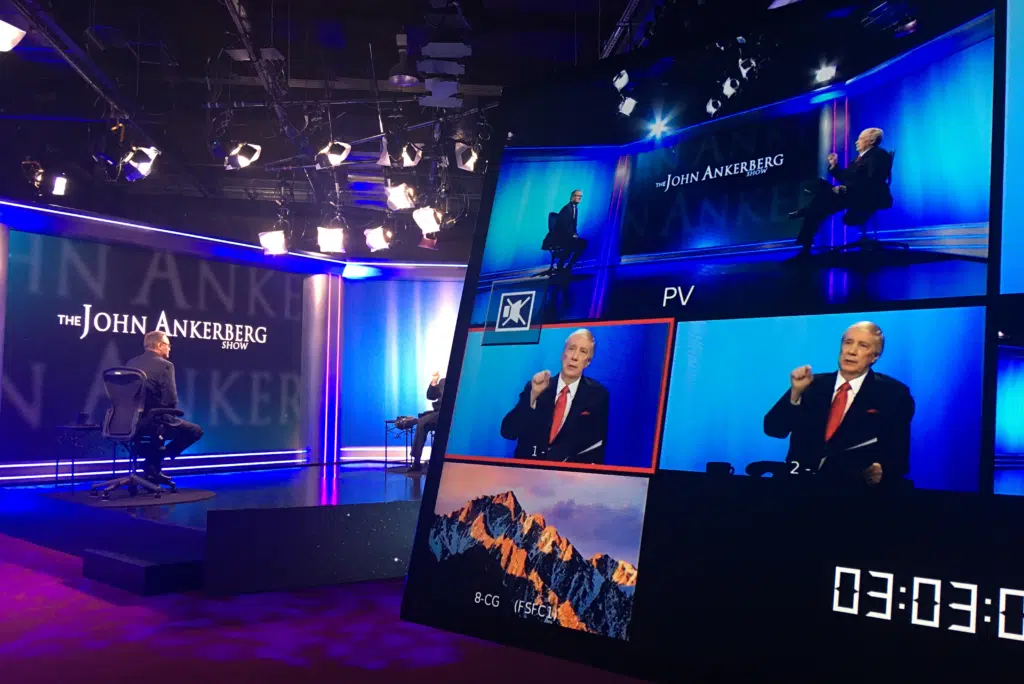Meditation – The Occult Nature of Meditation
| By: Dr. John Ankerberg, Dr. John Weldon; ©2004 |
| Although millions of people in American may not realize it, the practices, results, and goals of meditation may all be classified within the sphere of the occult world in general. The authors document the occult nature of the vast majority of forms of meditation practiced in America today. |
Contents
Meditation, The Occult Nature of Meditation
Millions of people today do not realize that most meditation is occult in nature. The practices (some form of daily meditative discipline), results (altered states of consciousness, psychic powers, kundalini arousal, spirit contact), and goals (some form of cosmic consciousness, enlightenment, or development of the “higher self”) may all be classified within the sphere of the practices, results, and goals of the occult world in general. In this section, we will document the occult nature of the vast majority of the forms of meditation practiced in America today.
Occult Phenomena in Meditation
Almost all forms of meditation involve three similar occult phenomena: 1) the cultivation of altered states of consciousness; 2) the eventual development of psychic powers; 3) The possibility of spirit possession. We will look at each of these following.
The Cultivation of Altered States of Consciousness
Meditation-induced altered states of consciousness are our first illustration of the occult nature of meditation. Following we will note the research of parapsychologist Dr. Karlis Osis and others which reveals that the most central factor in meditation is an altered state of consciousness (ASC), Parapsychologist Dr. Gertrude Schmeidler, former president of the Parapsychological Association, stales “Trance shows many similarities to meditation….”[1]
Trance states and ASCs have been traditionally associated with the occult world, demonism, and other forms of spirit contact, such as shamanism, witchcraft, neo-paganism, magic ritual, Satanism, mediumism, and yogic disciplines). Whether one is a short- or long- term practitioner, meditation is designed to change one’s view of “self” and the world by altering one’s consciousness. Noted parapsychologist Karlis Osis and others observe in “Dimensions of the Meditative Experience” that their own research reveals that “the most central and complex factor” of the meditative experience is an “intensification and change of consciousness”’ that is, an altered state of consciousness.[2] They also write:
- In spite of the almost universal claim that the meditation experience is ineffable [indescribable], clear dimensionalities [characteristics] emerge. Even more, these dimensions seem not to express everyday states of consciousness: The way of experiencing [reality] definitely changed…. The subject’s free comments support the view that successful meditation leads to altered states of consciousness.[3]
They conclude, “Effective meditation induces radical changes in a meditator’s way of experiencing [reality].[4]
Further, additional studies prove that meditation induces ASCs:
- Ludwig (1966) pointed out that ASCs have both maladaptive expressions (for example, acute psychotic reactions and manifestations of organic lesions) and adaptive expressions (for example, the shamanic trance for healing purposes and new experiences of knowledge and growth in mystical states)…. Meditation of any denomination or persuasion has been the religiously sanctioned method for the induction of the highest state of consciousness or Meditative ASC. A review of the psychological and philosophical analyses provided by many authors (James, 1902; Susuki, 1952; Stace 1961; Deikman, 1966; Prince & Savage, 1972) revealed a commonality of features..
These experiential characteristics permitted the categorization of meditative experiences as ASCs.[5]
The ASCs that meditation typically develops tend to result in a radically restructured, and false, view of self and society. Characteristically, one ends up thinking that the material universe is a dream or an illusion and that one’s true nature is one essence with God. Haridas Chaudhuri writes in his Philosophy of Meditations, “On attaining cosmic consciousness a person’s world view undergoes a radical transformation. The consensus of all mystics and sages. is that the world of normal experience is now revealed as unreal, as phenomenal, as a mere appearance, as a bad dream from which one wakes up with a sigh of relief..”[6] Another authority correctly points out, ‘“Decisive behavior changes follow from this state of consciousness, and the full realization of nirvana actuates a permanent alteration of the mediator’s consciousness per se. With the meditator’s realization of nirvana, aspects of his ego and of his normal consciousness are abandoned, never to arise again.”[7] In other words, the individual person is radically affected, and aspects of his being are destroyed, “never to rise again.”
Dr. Jack Kornfield trained for six years in Southeast Asia and teaches Buddhist vipassana meditation. As a result of his experiences, he eventually became a Theravadin Buddhist monk. He also has a doctorate in psychology and is the author of Living Buddhist Masters. He states, “One articulation of the purpose of spiritual practice and a viewpoint that is a product of it as well is to come to understand that we don’t exist.”[8] In other words, our body and personality are illusions and the goal of meditation is to escape from or “transcend” them in order to discover our “true” inner nature, which is supposedly one essence with God or ultimate reality.
There are many personal and social consequences to such a view. In the words of Maharishi Mahesh Yogi, the guru of transcendental meditation, the true self of the enlightened meditator “is uninvolved with activity. and it is uninvolved with the selves of individual beings.”[9] For the meditator, the entire world and all its activities is “like a world of dolls and toys” which he long ago discarded as an adult.[10]
Gurus and meditators often think that they are one nature with God as a result of their meditation practices. Muktananda says, “The Guru is God Himself.”;[11] Sai Baba tells his followers, “You are the God of this universe”;[12] and “You are God in reality”;[13] Rajneesh says, “As you are, you are God.”[14]
Since the result of New Age meditation is a reinterpretation of reality as an “illusion,” such meditation perceives normal consciousness itself as maya (illusion), that is, as a “trap” to be escaped if one is to find true liberation and spiritual enlightenment. Dr. Walsh states:
- …To date, I have seen no explanations other than the almost universal ones among the meditative-yogic traditions that normal man is an automaton, more asleep than awake, etc.
- …A remarkably wide range of meditation and yogic disciplines… assert that whether we know it or not, untrained individuals are prisoners of their own minds, totally and unwittingly trapped by a continuous inner fantasy-dialog which creates an all-consuming illusion or maya.. “Normal” man is thus seen as asleep or dreaming.. When the individual permanently disidentifies from or eradicates this dream he is said to have awakened and can now recognize the true nature of his former state and that of the population. This awakening or enlightenment is the aim of the meditative-yogic disciplines ….[15]
Thus New Age meditation is properly classified as an occult practice because it induces ASCs that support occult philosophies and goals.
The Eventual Development of Psychic Powers
Almost all forms of meditation lead to the development of psychic abilities. This is acknowledged by researchers and practitioners alike. Psychology Today associate editor and psychologist Daniel Goleman has the Ph.D. in clinical psychology from Harvard and is an authority on Buddhist vipassana [mindfulness] meditation. In his article “The Buddha on Meditation and States of Consciousness,” Goleman observes that “every school of meditation acknowledges them [psychic powers] as by-products of advanced stages of mastery….”[16]
A popular teacher of meditation says:
- …Psychic power expresses itself in many forms. It is known as intuition, clairvoyance, clairaudience, precognition, mental telepathy, telekinesis, cosmic perception and spiritism. The techniques for developing all these various forms of psychism are the same. Mystic meditation is the means by which you may reach into the higher psychic centers of consciousness and channel the tremendous forces that await your joyous discovery.[17]
Leading consciousness researcher John White acknowledges that “psychic development is likely in the course of one’s [meditative’ practice.”[18] Television personality and para-psychologist Patricia Mischell says that “one of the unforeseen bonuses of meditation is that many people experience an increasing or unfolding of their mental-telepathy abilities, clairaudience, and clairvoyance through meditation.”[19]
Several experimental studies concluded, “Meditation is an effective means of producing controlled psi [psychic] interactions.”[20] And a three-year study by Karlis Osis and Edwin Bokert also revealed a correlation between meditation and psychic ability.[21] One writer explained the ability of meditation to induce astral projection and spirit contact:
- Transcendental meditation is used as a means for releasing the soul from the physical body and projecting it into the astral realms. While you are out in the astral [plane], your soul may acquire knowledge from [dead] ancient masters. You may become instructed in the arts, music, languages, history or the mystical secrets back of the cosmos. When you enter that mysterious fourth dimensional world of spirit, you can tap unlimited powers and soar to mystical realms where the immortals dwell.[22]
But psychic powers, however they are mediated in men, are spiritistically induced and not the result of some allegedly “divine” human potential. Whenever spiritism is found, psychic powers are also found (904). The individual who develops psychic powers invariably involves himself in the world of spiritism, knowingly or unknowingly. Because New Age meditation develops psychic powers, it is proper to classify New Age meditation as a form of occult practice.
(to be continued)
Notes
- ↑ Gertrude Schmeidler, “The Psychic Personality,” Psychic, March/April 1974, p. 30.
- ↑ Karlis Osis, et. al., “Dimensions of the Meditative Experience,: The Journal of Transpersonal Psychology, vol. 5, no. 2, 1973, p. 121.
- ↑ Ibid., p. 130.
- ↑ Ibid., p. 109.
- ↑ Komilla Thapa, Vinoda Murthy, “Experiential Characteristics of Certain Altered States of Consciousness,” The Journal of Transpersonal Psychology, vol. 17, no. 1, 1985, p. 78.
- ↑ Ruth Montgomery, A World Beyond (New York: Coward McCann and Geoghegan, 1971), p. 59.
- ↑ As told by his friend Colin Wilson, in Mysteries (New York: G. P. Putnam’s Sons, 1978), p. 148, emphasis added.
- ↑ Roger N. Walsh, Frances Vaughan, eds., Beyond Ego: Transpersonal Dimensions in Psychology (Los Angeles, CA: J. P. Tarcher, 1980), p. 15, emphasis added.
- ↑ Maharishi Mahesh Yogi, On the Bhagavad Gita (Baltimore, MD: Penguin, 1974) p. 212.
- ↑ Ibid., p. 157.
- ↑ Swami Muktananda, Siddha Meditation: Commentaries on the Shiva Sutras and Other Sacred Texts (Oakland, CA Siddha Yoga Dham of America, 1975), p. 98; cf. pp. 99-106.
- ↑ Sai Baba, Sathya Shivam Sundaram, Part 3 (Whitefield, Bangalore, India: Sri Sathya Sai Publication and Education Foundation, 1972), p. 112.
- ↑ Sanathann Sarathi, ed., Sathya Sai Speaks, vol. 8 (Tustin, CA: Sri Sathya Sai Baba, Book Center of America, 1975), p. 68.
- ↑ Bhagwan Shree Rajneesh, The Mustard Seed (San Francisco, CA: Harper & Row, 1975), p. 382.
- ↑ Roger Walsh, “Initial Meditative Experiences, Part One,” The Journal of Transpersonal Psychology, vol. 8, no. 2, 1977, pp. 156-157.
- ↑ Daniel Goleman, “The Buddha on Meditation and States of Consciousness,” in Charles Tart, ed., Transpersonal Psychologies (New York: Harper Colophon Books, 1977), p. 218.
- ↑ Anthony Norvell, The Miracle Power of Transcendental Meditation (New York: Barns and Noble, 1974), p. 91.
- ↑ John White, “What is Meditation?” New Realities, September-October, 1984, p. 48.
- ↑ Patricia Mischell, Beyond Positive Thinking: Mind Power Techniques (Englewood Cliffs, NJ: Printice-Hall, 1985), p. 126.
- ↑ Stanley Krippner, Leonard George, “Psi Phenomena Related to Altered States of Consciousness,” in Benjamin B. Wolman, Montague Ullman, eds., Handbook of States of Consciousness (New York: Van Nostrand Reinhold Co., 1987), p. 339.
- ↑ Karlis Osis, Edward Bokert, “ESP and Meditation,” Journal of the American Society of Psychical Research, January 1971.
- ↑ , Miracle Power, p. 153.







Thanks for the article.
Is there anyway to get a direct email of the authors I’m working on this for school. And to share with others Go for a run 🏃♀️ Join the Y !! Connect with others! meditation is good for short periods!
Thank you
Yes you are right
We want to be one with GOD
Meditation is the best way to connect
With yourself
Yes psychic powers are spiritistically induced and not the result of divine human potential
It’s important to realize we do not have supernatural abilities in and of ourselves – it is given by a spirit
There are 2 types of spirits in the world – fallen angels and Gods angels
When we do a practice forbidden in the Bible – it’s the fallen Angel (demonic spirit) that interacts with us , Gods angels only do Gods bidding , not ours
So this psychic power is not of God – that’s why practices of eastern meditation , yoga, any type of sorcery , divination opens demonic doors
Many testimonies on line of this
Don’t empty your mind and leave yourself open to the demonic spirits !